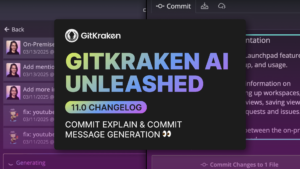This post was written by guest author, Chioma Iwunze. Chioma is passionate about all things writing, be it creative writing, content writing, and content marketing. A graduate student at Cornell University, Chioma is currently working on her thesis. She owns and manages creativewritingnews.com.
Prior to the pandemic, remote work was rare. Although some software development companies hired remote workers, the trend was mostly scoffed at until the pandemic revolutionized the nature of work.
A growing body of researchers have studied the prevalence of remote work among software developers. In a 2021 survey by GitLab, 82% of respondents said they believed that remote work is the future, while another 2022 survey by Stack Overflow found that 85% of developers work in organizations that are at least partially remote. Software development platform, Terminal.io, published the 2023 edition of the State of Remote Engineering Report in which 66% of engineers reported that they worked remotely all of the time, and 80% of respondents reported that they would prefer to work remotely at least 80% of the time.
A 2021 study by Upwork found that 80% of technology hiring managers have hired remote web mobile and software developers in the onset of the COVID-19 pandemic, and that these recruitment managers intend to continue this trend. These studies indicate that remote work is becoming increasingly common among software developers, with many companies embracing it as a viable option for their employees.
In 2023 the question is no longer “how possible is it to have remote software engineering teams?”. Instead, business executives are trying to figure out how to transition from managing software development teams in the traditional office to managing them remotely.
In this article, we will list and enumerate 7 surefire strategies for effectively managing a remote software development team.
- Set Clear Goals and Expectations
- Encourage Open and Transparent Communication
- Acknowledge the Importance of Effective Internal Communication
- Demonstrate Trust for Software Development Team Members
- Keep Track of the Team’s Progress
- Be Flexible
- Leverage Modern Technological Tools
Set Clear Goals and Expectations
Because remote software development teams work from different locations and environments, team members must be on the same page regarding goals and expectations.

Effectively communicated goals should help remote workers align on what is important to the organization and meet expectations.
As a remote team leader, you must be clear when communicating software development goals to your members. You can achieve clear communication in the following ways:
- Clearly define the specific and measurable goals you want the team to achieve so no one is left in the dark about what success means.
- Spell out the benefits and purpose of the goals. Your remote team members must know why the goals are essential to the company and what they stand to gain from their achievements.
- Ensure that your team members understand how their individual tasks contribute to achieving company goals.
- Avoid surprises by keeping the team well-informed of changes to the original goals.
- Ensure everyone is aware of established deadlines and milestones and are working toward meeting them.
Encourage Open and Transparent Communication
One of the best things you can do for your remote team is to establish and encourage open communication among your team.
A growing body of evidence suggests that effective communication is a key driver of productivity among remote software development teams. Regular check-ins, transparent communication, and virtual face-to-face meetings are effective ways to maintain productivity among remote teams.

Research published in the Harvard Business Review showed that small talk helps people to connect emotionally and boosts collaboration and creativity.
Small talk is something many of us miss about going into the office, and for good reason. Besides improving the mental health of software developers, regular communication helps people feel emotionally connected and boosts both collaboration and creativity.
A great way to encourage open communication is to set aside specific time for team members to regularly interact with their peers to discuss both work related objectives as well as to simply build team morale and compatibility.
Pro Tip: make sure the goals for these meetings are clearly defined so team members know exactly what to expect from each meeting.
Acknowledge the Importance of Effective Internal Communication
Furthermore, effective internal communication is crucial for the success of any software development team and organizing and segmenting email lists can be an effective tool for facilitating this communication. A Center for Creative Leadership study found that remote workers who communicate regularly with their managers and colleagues have higher job satisfaction and are more likely to stay with their current employer.
A growing body of evidence suggests that healthy email lists can be effective for broadcasting information, coordinating activities, and building a sense of community within an organization. Additionally, some studies have found that regular use of internal email lists can improve communication among team members, increase collaboration and productivity, and enhance the overall performance of the organization.
Demonstrate Trust for Software Development Team Members
Trust, or the lack of it, is a big issue in the remote work environment. Many remote software engineers feel they need to be trusted more by their leaders.
As the leader of your remote software development team, you should learn how to trust, respect, and believe in the abilities of your team to do the right things.

Some of the benefits of trusting your team members include the following:
- There is increased morale and satisfaction when you trust your team members.
- Your remote team members will feel more empowered to take ownership of their work, leading to increased productivity.
- Trust leads to employee confidence, encouraging them to take on new challenges.
- Trust will inspire your team members to be more creative in their jobs.
- Increased employee retention. Employees love to stay with a firm that trusts and values their abilities.
Constantly questioning the abilities of your team members to carry out their tasks reduces their self-confidence.
You can develop trust for your team members by:
- Recognizing and acknowledging their contributions toward the attainment of the company’s goals.
- Being flexible and empathetic when team members are faced with challenges.
- Rewarding good work and achievement.
- Giving team members space to take initiative when issues arise.
Developing trust and respect for your remote team members will lead to a more successful and productive working environment. Trusting your team gives them opportunities to expand their skills, prove themselves, and allows managers the chance to identify and reward ambitious team members.
Keep Track of the Team’s Progress
A remote team leader should regularly check in to monitor the team’s progress and address possible issues.
Allowing issues to linger can hinder the progress of your remote team. Quickly identifying and removing any challenge will lead to increased productivity.

Other benefits of keeping track of your team’s progress include the following:
- Some remote workers sometimes feel less accountable for their work because they are outside the office environment. Regular check-ins can help keep them accountable.
- Regularly checking your remote team can prevent burnout by ensuring that software developers are not working excessively.
- Keeping track of your team’s progress prevents communication breakdowns and encourages improved collaboration.
- Tracking your team’s progress can increase productivity by keeping remote team members on their toes.
Remote Team Leaders Must Be Flexible
Flexibility as a remote team leader means you are open to new ideas and willing to try new opportunities.
In the book “Defining and Conceptualizing Workplace Flexibility”, researchers noted that a flexible working environment is an excellent opportunity for an organization to strike a sufficient work-life balance.
One way to show your flexibility as a remote team leader is to show your ability to adapt to different technological communication methods.

Try using more than one technological communication method. Be open to instant messaging, video conferencing, and other project management tools to stay connected with your team.
You can also show flexibility by being ready to adapt to new ways of working with and supporting your team.
Another way of being flexible as a remote team leader is to show strong leadership skills by delegating tasks effectively.
A team leader can also be flexible by allowing team members to work at their own pace, time, and space. Team members are more productive when they can work where and when they feel most comfortable.
Leverage Modern Technological Tools
It is imperative to stay connected with your remote software development team members. The best way to do this is to utilize technological tools that will enable you to connect and help team members collaborate.
Although tech tools can help remote workers collaborate and communicate with each other, a recent study shows that too many of them can kill productivity. According to a joint study by Qatalog and Cornell University’s Ellis Ideas Lab, too many tech tools damage workers’ focus and creativity.
For instance, many remote managers use multiple tools to track and retrieve logs and monitor the number of registered devices their remote teams use instead of using one unified observability platform.
A remote software development team manager must evaluate and determine which remote tool will best fit the needs of members of the team.
Managing Effectively
Overall, managing a remote software development team requires a different approach than managing a team that works in a traditional office location. To boost the productivity of a remote development team, leaders need to adopt strategies that facilitate communication, collaboration, accountability, and team building. It is important to be proactive and intentional in order to create a successful and efficient remote team.










